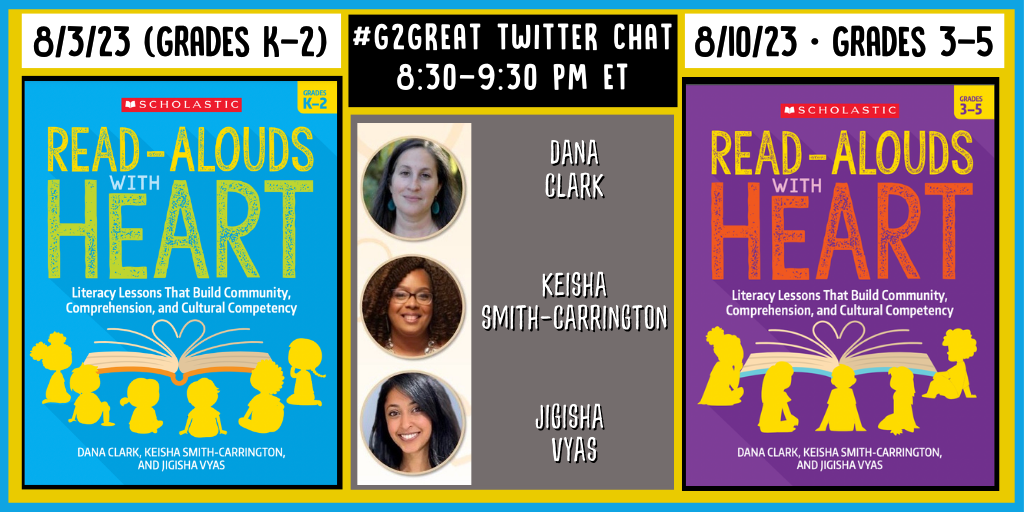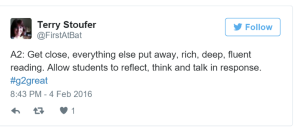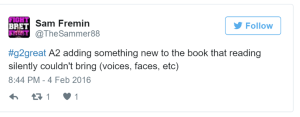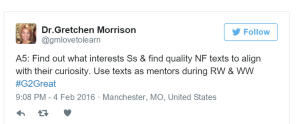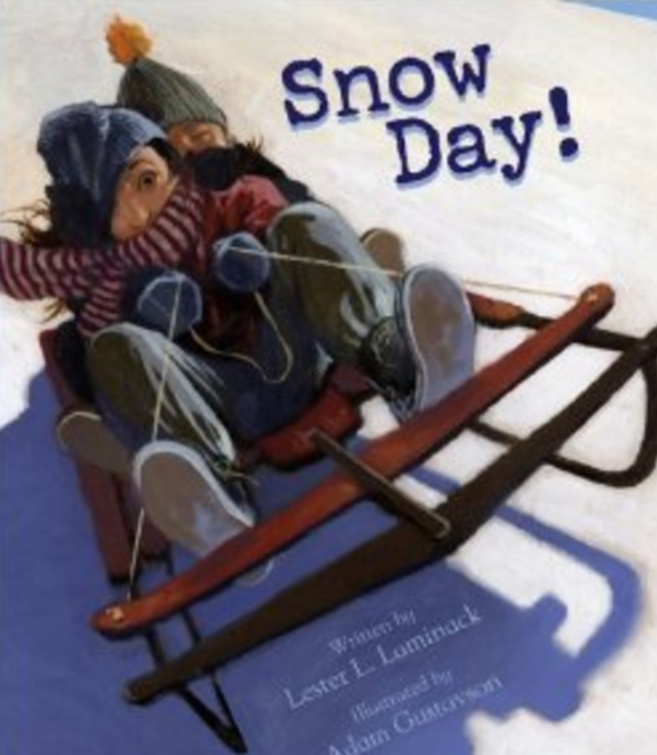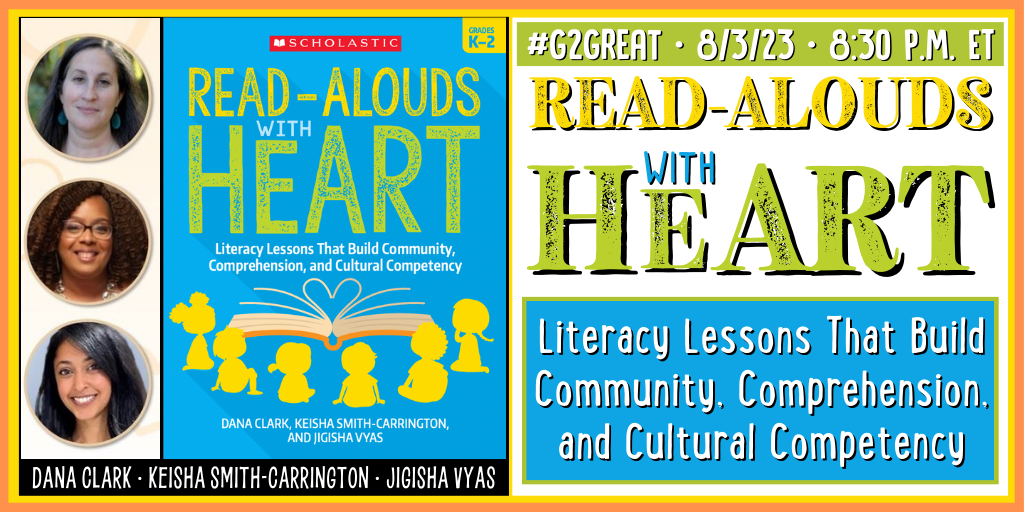
You can access our #G2Great Chat Wakelet artifact HERE
By Mary Howard
On 8/3/23, we welcomed #G2great chat guests, Dana Clark, Keisha Smith-Carrington and Jigisha Vyas to discuss the grade K-2 edition of their wonderful new book: Read-Alouds with HEART: Literacy Lessons That Build Community, Comprehension, and Cultural Competency (2023, Scholastic). We are excited about their return visit to our chat on 8/10/23 to discuss the grade 3-5 edition.
As I began reading, I was immediately struck by their collective commitment on page 5 of Dear Reader (You can read this beautiful letter in full at the end of my post). The authors explain that their collaboration began with “a seed of hope and a conversation.” I was inspired and very aware that their commitment can inspire ours. We too can plant seeds of hope by engaging in conversation that can become a rich springboard to change. If we are very wise, we will open this door to professional dialogue to come together for our children. Through our shared contemplation we can determine how to expend precious limited minutes in ways that will honor all of the beauty and brilliance that is within them.
Before our #G2Great chat began, we shared our first book quote below. This quote is a reminder that rising to the challenge of collective conversations is not limited to teachers. We must in turn extend conversational invitations to our children as we make them active participants in their own learning through rich inquiry centered on varied identities of book characters real-life people, self and others as we value the conversations they bring to the experience.
When we afford opportunities to contemplate real issues in their individual and shared corner of the world and beyond, we offer a precious gift. The renewed hyperfocus on scripted read-aloud dishonors the “RIGHT” described below. There is a vast difference between a read-aloud ball and chain vs. actively immersing children in exploratory thinking as they pose and contemplate their own questions in a safe invitational environment. We plant seeds of hope FOR and WITH children by giving them a seat of honor at the decision-making and discussion table.
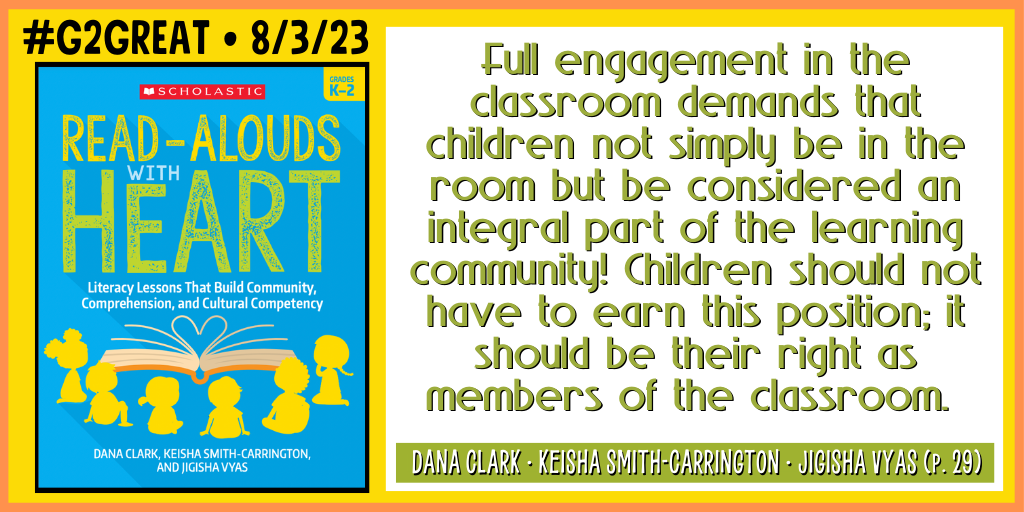
PONDERING POINT: How are you keeping the promise of that “right“:“ alive?
Since this identity work is central to Read-Aloud with HEART, I wanted to draw from some tweets that Keisha, Dana and Jigisha shared in our chat.
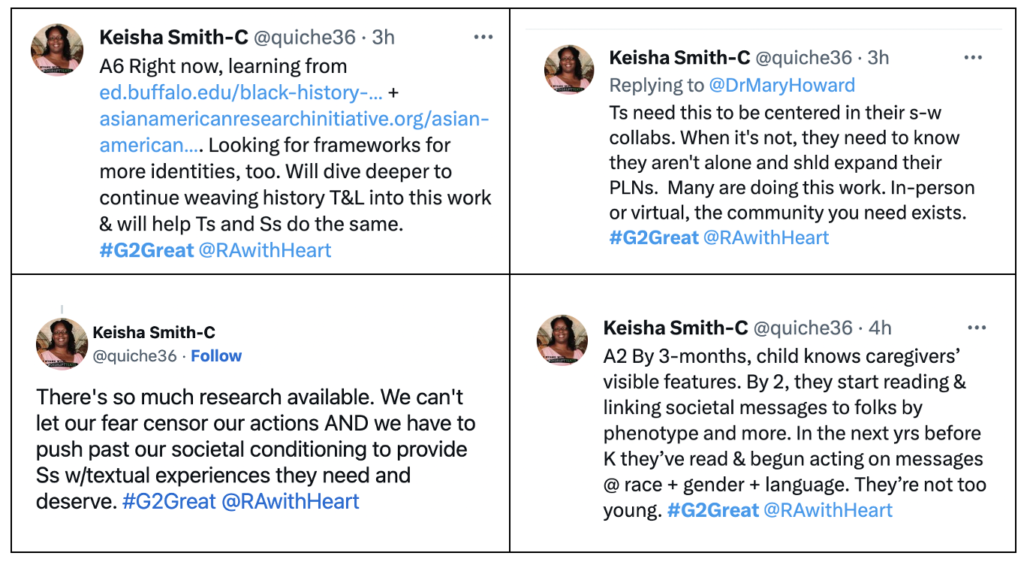
Words of wisdom from Keisha Smith-Carrington

Words of wisdom from Jigisha Vyas

Words of wisdom from Dana Clark
In Dana’s last tweet above, she kindly shared TYPES OF CIRCLES added below

When authors grace our #G2great chat, we ask them three questions that offer insight into their book. Let’s look at their response to our first question focused on their BOOK WHY beautifully co-written by Dana, Keisha and Jigisha:
What motivated you to write this book? What impact did you hope that it would have in the professional world?
We have spent the last few years supporting students and teachers through unprecedented stress and uncertainty, in school, at home, and in communities. We’ve all been there–been through it, many of us hope we are on the other side of it. But it raises the question: What is ”it”? The pandemic? No, not so easy. To wildly varying degrees, we’ve experienced the trauma of watching our society come unglued in the midst of the pandemic. As our screens lit up with images of a black man lying on the ground begging for breath, the very best and very worst of humankind showed up. George Floyd’s three words– “I can’t breathe,”–became an echo in our heads and hearts, and a voice heard round the world, igniting a call for social justice. People in every corner of the world began marching in protests, pushing for legislative action, and propelling us towards justice reform on a scale not seen in decades.
But the worst was unleashed too, in chat rooms and on city streets, and in the heads of those who want to wall themselves off from diversity and equity. And children see and sense it all. The best and the worst.
For many students, the trauma of the last few years has been compounded by the fact that the so-called breaking news of violence is not new at all, but old and systemic. They know firsthand the way particular groups have been marginalized.
As educators, we have to help students process this tumultuous world. It’s hard to believe that a 32-page picture book has the power to heal or solve anything. But it does.
That’s what our book is about. As educators, the time is now to create more socially and emotionally conscious schools. We are standing at a critical junction right now, with the possibilities of more inclusive schools on the horizon if only we commit to that path.
Read-Aloud with HEART is more than a book about reading aloud. The authors ask us to view both choosing and using books as a vehicle to experiences grounded in hope, humanity and humility so that we may touch and thus impact the lives of the kids in front of us . On page 26, they write:
“If they are to thrive, every one of our students needs to feel they belong and have worth in the fullness of any identities they hold.”
Soak that as you acknowledge that this won’t happen by chance…
They ask us to take accountability and responsibility not only to know our children but ourselves as well and understand how our identities can carry biases, misconceptions and assumptions that can become blinders to the realities of others. Read-Aloud with HEART lessons are not one-size-fits-all book recipes that narrow our view but rather book inspirations that offer open-ended invitations with unwavering belief for worth in the fullness of any identities they hold. Their respect for teachers and students is evident across every page as they show us possibilities book offers so that we can choose the right book at the right moment for children who need that book and those conversations that book inspires as we celebrate child-centered opportunities.
The book quote below also speaks volumes. Sadly, our humanity is in question as book banning intensifies across the country and in schools where books are literally being pulled from classroom shelves. Most of these are the very books that a child could connect to the characters and the stories that make them feel SEEN! We must hold tight to an opportunity to push back against anything that robs any child of book experiences that could be a pathway to acknowledging and celebrating who they are not just as learners but as humans.
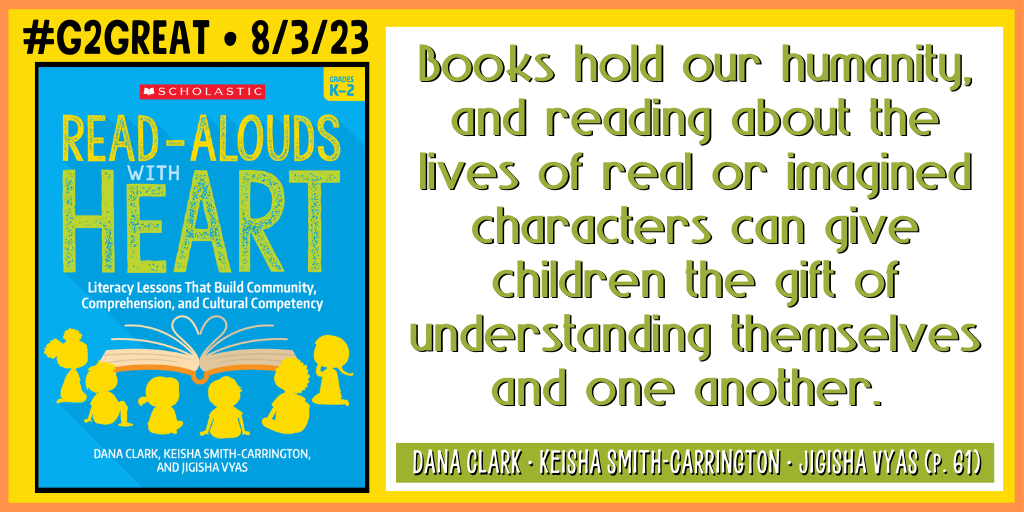
PONDERING POINT How do you identify and use books that hold our humanity?
Now let’s look as they respond to our 2nd question on their BOOK HOPES:
What are your BIG takeaways from your book that you hope teachers will embrace in their teaching practice?
Before teachers get to bringing any of the books or lessons forward in their classrooms, we hope teachers understand that the journey of understanding our own identities and biases is essential and is ongoing. We hope teachers see the urgency around self-discovery and the importance of studying the intersection of their own identities and the identities of the students in their care. It is this understanding that influences their everyday interactions and can help them to avoid harm and love their students.
Read-Alouds with Heart springs from the premise that teachers are ready to open up their classrooms to diverse texts and conversations, and ready to cultivate social-emotional learning and students’ understanding of social justice, but they naturally want to do it “right.” With developmental appropriateness, nuance, authenticity, and not at the expense of developing reading skills. Picture books are a vehicle for achieving all these goals, of course, but the text itself is just the beginning. It’s for this reason that we provide specific lenses for reflection and conversation around each of the featured books, so that teachers feel confident and expert, every instructional minute. It is our hope that teachers will embrace and internalize this framework designed to help them select strategies and conversational prompts to bring to critical thinking and community to their classrooms.
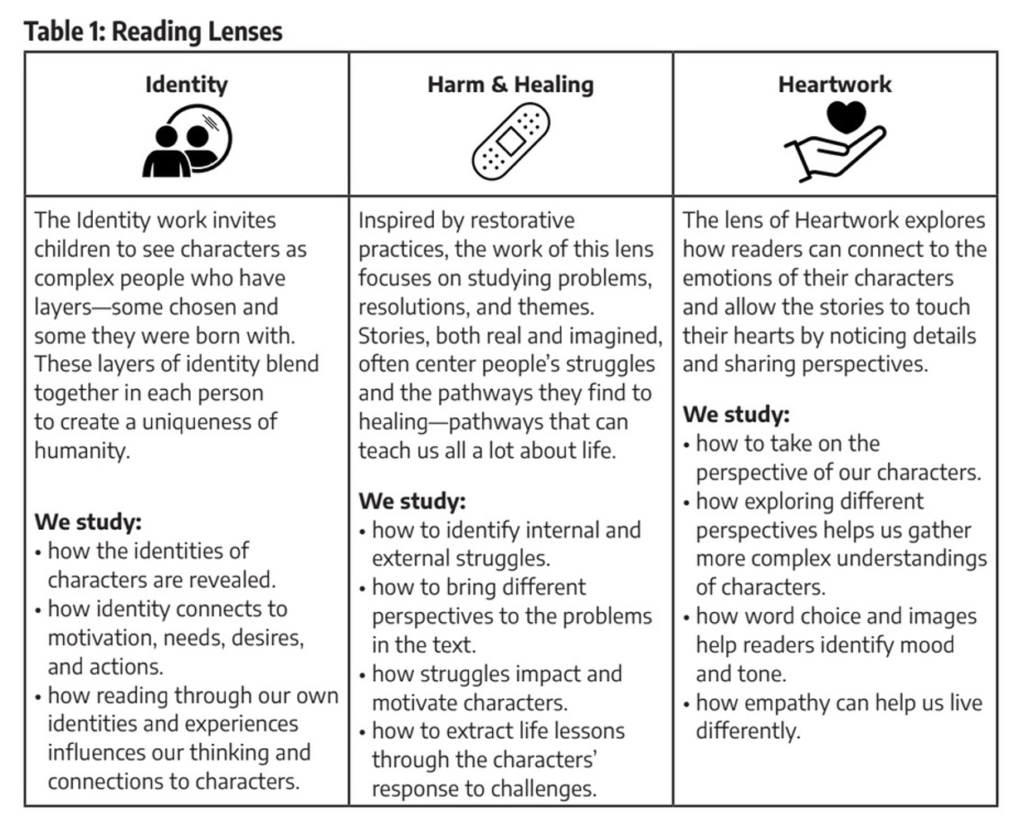
The authors gave permission to add Table 1: Reading Lenses on page 9
In addition to the framework, we hope teachers can use our book to consider how our intentions for the experiences we bring to students inform more than the skill being taught; they also inform the structure we choose for the lesson. Our books’ lessons include multiple ways of engaging with students. We want teachers to know that if the goal is for students to share a pathway for thinking, or strategy, they might choose to frame a lesson with the step-by-step strategies offered. However, if their goal is to allow the voices and perspectives in the room to help students see each other’s ideas and be moved by each other, circles are the way to go.
SOME FINAL WORDS
As I come to a close, I’d like to share a lovely gift from the authors. When we asked them what was a message from the heart they wanted teachers to keep in mind, they generously gave us permission to share an inspirational two-page “DEAR READER.” I fell so in love with these opening pages that I shared a quote at the beginning of this post. Please read their message from the heart slowly because you will then understand the very heart and soul of this book that they eloquently bring to life across the pages that follow.
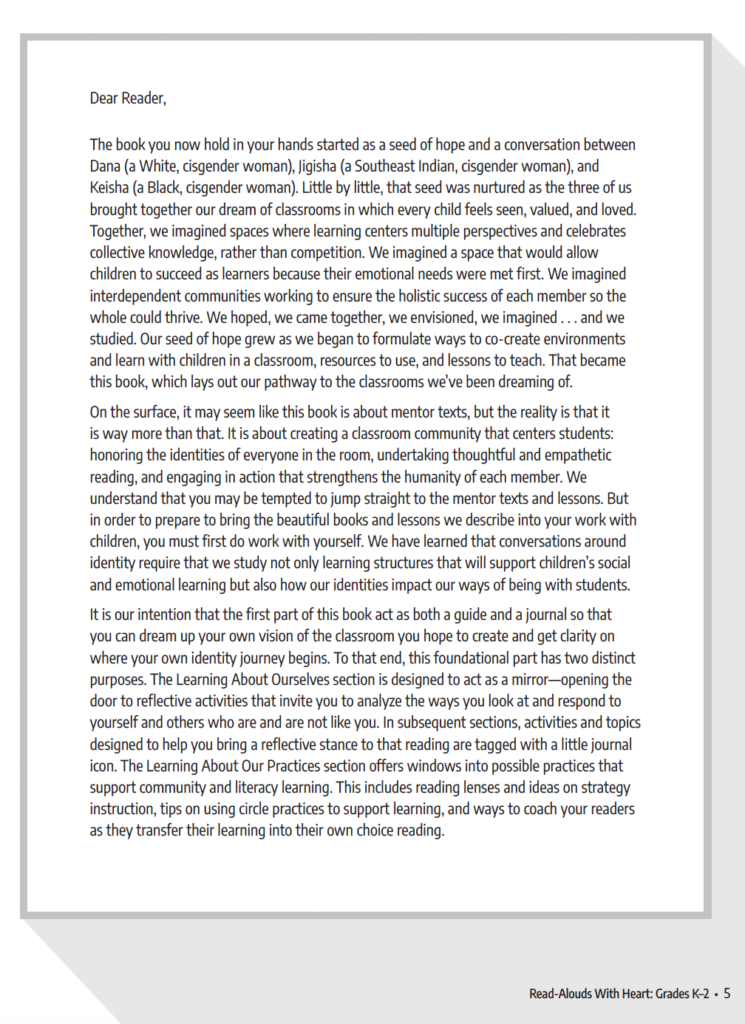
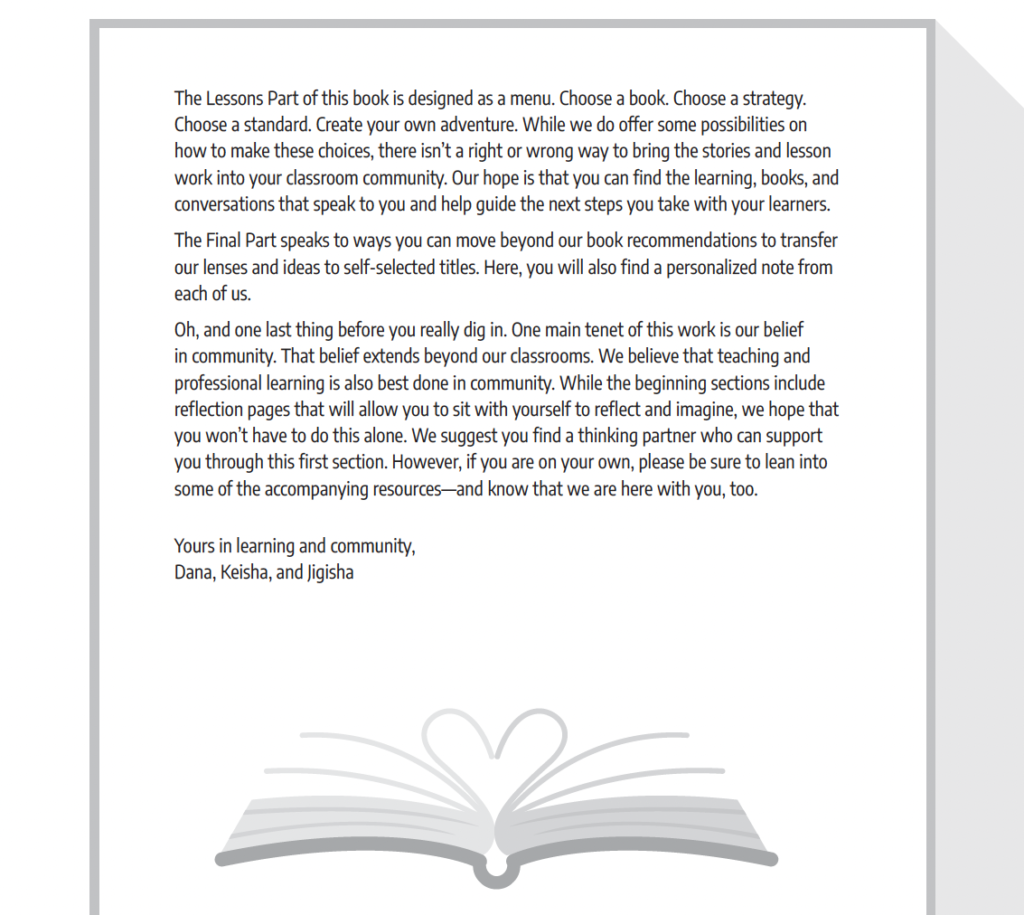
We are so grateful to Jigisha, Keisha, and Dana for writing Read-Aloud with HEART. It’s a testament to teachers who will choose to open themselves up to someone else’s truth and to the children who will see a change in the world and inspire their own change because of these conversations from the HEART.
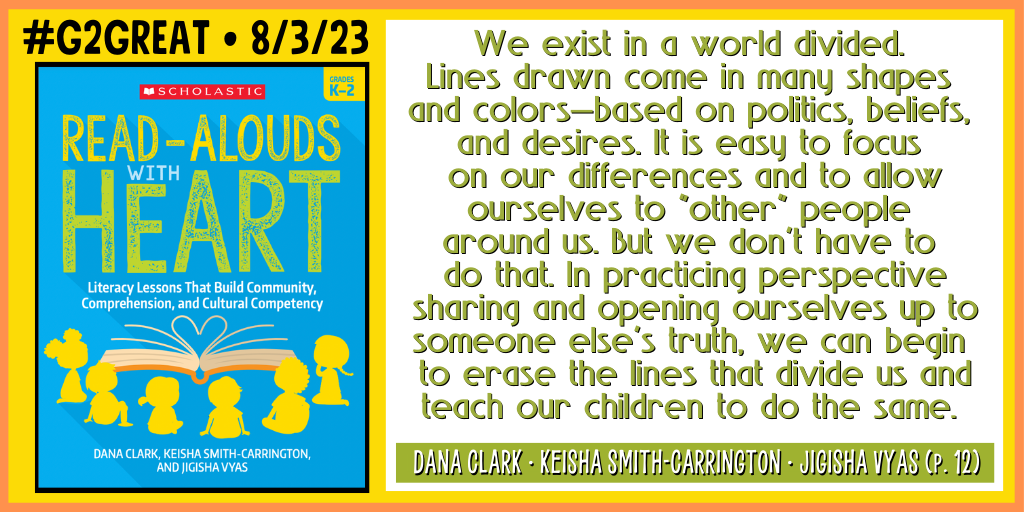
Pondering Point: How do you open yourself up to someone else’s truth?
We hope you’ll join us when our wise and wonderful friends return to the #G2Great guest seat as we turn our attention to Read-Alouds with HEART grade 3-5 edition. This is a wonderful opportunity to extend our discussion and widen your read-aloud view further (or explore it from their eyes for the first time.)
